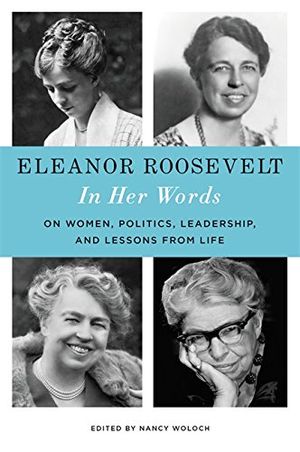Collection of Eleanor Roosevelt’s Writing Captures the First Lady’s Lasting Relevance
On the 133rd anniversary of her birth, “ER“‘s influence lives on
/https://tf-cmsv2-smithsonianmag-media.s3.amazonaws.com/filer/86/71/8671cd0f-1035-4afe-a4c1-667f31f91db6/ap_340126018.jpg)
Marian Anderson was said to have kind of voice you heard once in a lifetime.
At 42, the contralto opera singer had performed to acclaim throughout the United States and Europe. She also happened to be black. In 1939, when Howard University requested that she perform on Easter Sunday at Constitution Hall, the largest auditorium at the time in Washington, D.C., the Daughters of the American Revolution, who owned the space, refused to give permission.
News of Anderson’s treatment made headline news and caught the attention of First Lady Eleanor Roosevelt, a member of the lineage-based organization.
“She saw her opportunity to make a statement by resigning,” says Nancy Woloch, adjunct professor at Barnard College and Columbia University, who chronicles the controversy in her new book of the first lady’s collected writings, Eleanor Roosevelt: In Her Words.
Combing through columns, books, press conferences, lectures, speeches, radio talks and letters, Woloch presents a complex picture of Roosevelt as a sharp defender of democratic ideals. Using her platform as a journalist, lecturer, radio broadcaster and author, Roosevelt was determined to speak out against societal wrongs. No better example presents itself than the famous series of events with Anderson.
Roosevelt, who had first met the opera singer when she performed at the White House in 1935, was unwilling to stand by in the wake of the controversy. At first, she worked behind the scenes to secure a spot for Anderson to perform again at the White House, and also agreed to give her a prestigious medal at an event for the National Association for the Advancement of Colored People (NAACP). But when the DAR continued to dig its feet in, she decided to make a public stand.
On February 27, 1939, she carefully announced that she was withdrawing her membership from the DAR in her “My Day” column. The six-day-a-week platform, which ran for more than three decades, gave “ER” a regular opportunity to engage with the American public and test the political waters of the day.
“I belong to an organization in which I can do no active work,” she wrote in her column. “They have taken an action which has been widely talked of in the press. To remain as a member implies approval of that action, and therefore I am resigning.”
She followed the announcement with a press conference. ER had spearheaded the first White House press conferences for women reporters almost immediately after her husband, Franklin Delano Roosevelt, came into office. Over the course of 12 years, she held 348 of them, where she could get her message across on her own terms.
To a racially divided America, ER’s decision was a bombshell. Following it, she helped organize an outdoor concert for Anderson in the shadow of the Lincoln Memorial. An audience of 75,000 flocked to hear her in the historic concert, knowing the White House stood in support of her. The first song Anderson performed was a powerful and poignant rendition of "My Country, 'Tis of Thee."
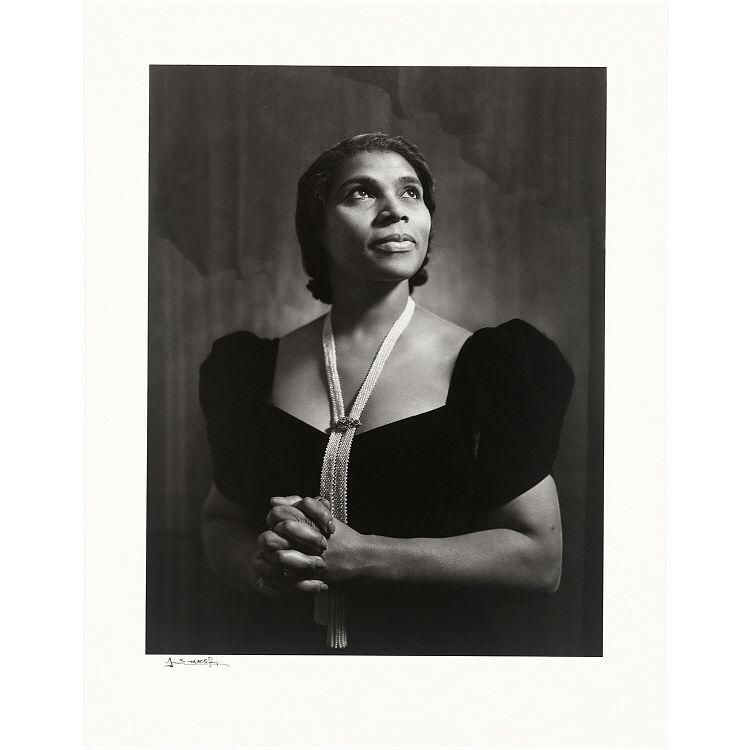
“A masterful public relations triumph, the Marian Anderson episode came to represent Eleanor Roosevelt’s commitment to civil rights, an allegiance that was unexpected, influential, enduring and ever deepening,” Woloch writes.
The move was also deeply characteristic of the first lady. Born almost four decades before women won the right to vote in the United States, Roosevelt lived through much of the 20th century’s great struggles, and felt compelled to shape the march of progress in her own right. Throughout her life, she played an important role in the Civil Rights Movement, the women’s movement, and labor reform movement, and lived long enough to lead President Kennedy’s Commission on the Status of Women before her death in 1962.
Now, 133 years after her birth, Woloch speaks with Smithsonian.com about why ER’s legacy remains unparalleled.
Eleanor Roosevelt: In Her Words: On Women, Politics, Leadership, and Lessons from Life
Eleanor Roosevelt: In Her Words tracks her contributions from the 1920s, when she entered journalism and public life; through the White House years, when she campaigned for racial justice, the labor movement, and "the forgotten woman;" to the postwar era, when she served at the United Nations and shaped the Universal Declaration of Human Rights.
Eleanor Roosevelt is such a prolific writer and journalist in her own right. What stood out to you as you started sifting through her work?
Her utter relevance. A number of decades have gone on, and I found her journalistic voice very clear, very startling, and direct. She started writing about civil rights so early, in the 1930s. I am pushing further into her work and there is a denunciation of “America First.” Everything with Eleanor seemed unusually to speak to the present day. Her denunciation of Soviet diplomats at the United Nations for their intransigence, it almost seemed like something you could rip from the headlines. The Soviets are gone, but the intransigence remains. So, in her own way, she was speaking directly to the present.
In a number of really charming occasions, the writing is a little bit antiquated; especially early in her career she wrote for a women's magazine, but it's very charming. Her remarks on “Ten Steps to Success in Marriage,” very charming.
Also, it was the actual amount of it. I mean, this is a productive journalist. She's at it all the time: a column six days a week, a monthly column, I mean she doesn't stop. So the phenomenon essentially is she is someone who's making news all the time, and at the same time [writing] about it. I can't think of any parallel person who's doing all of that. She’s covered by other journalists and also acting as a journalist herself. She has sort of a double existence.
Did she ever get pushback from FDR or the White House about what she was writing in the press?
Oh, yes. She's pushing and pushing FDR on civil rights for African-Americans, and that's personal. She goes into his office and tells him what to do, and he just really doesn't do it. Some of her advice I'm sure was well-received because they were in genuine agreement on basic policies on labor issues, relief policies, things like that, but she got push back on civil rights. At one point, in one of her memoirs or later articles I forgot where it is, she observes that he used her to an extent. She says that: "I guess he used me." Then she says, "But I used him too."
Right, you mention how transactional their marriage became after he has the affair with his social secretary. That seemed like a real turning point for her.
That affair seems to be the start of her public life. It's at that point, and also when he gets sick. He gets polio a couple of years after that affair, so this combination of circumstances seems to push her into public life, and they have a political partnership thereafter. Sometimes it's quite distant. I think during the war years, '41 to '45, they were calling each other and writing each other. The partnership continues, but they're sort of distant. Then after FDR dies in '45, she starts speaking for him in various articles and radio speeches and so forth and so on which was very interesting. That really opens up the whole civil rights area, you know? Should we go there?
Yes, let’s talk about her Civil Rights record.
It's probably the most original thing she did in public policy. I am so astounded by it. She's the first resident of the White House to endorse civil rights since what--since Lincoln? It's a very, very high risk operation that she gets into, and she does this almost as soon as she gets into the White House. [NAACP executive secretary] Walter White approaches her and approaches her and approaches her. He's telegraphing and writing to her, visiting her, and she's really listening. Immediately, she's engaged in the battle and she sticks with it for the rest of her life.
FDR depends on Southern legislatures to support the New Deal. He can't possibly do everything she wants or indeed anything she wants, but by committing herself to this cause, she gets this form of moral authority that she has forever after.
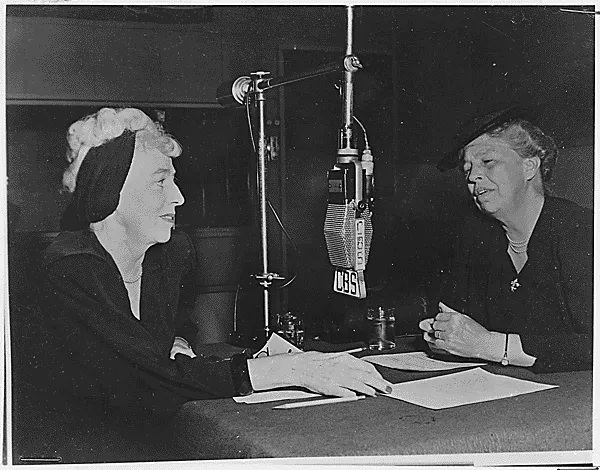
The Marian Anderson correspondence is one of the most notable examples of her Civil Rights legacy. What are some other letters of note?
You know her correspondence is so voluminous, especially with the public. I tried to include a sample letter of her giving advice to FDR. She's giving him advice, and then she does the same thing with Truman. She did not stop giving advice. Poor old Truman is getting a letter every day from her telling him what to do, so I included one of her messages to Truman.
You also include the one she writes to JFK after his famous debate with Nixon. That one starts like a celebratory letter but then switches quickly to advice. I thought that was so funny, and I was struck by how many funny moments there were in her letters.
I was struck by the funny moments too. That was a very interesting letter to JFK. She had such suspicion of the whole Kennedy family because of [their father] Joseph Kennedy, who was such an isolationist and had such trouble with Roosevelt.
She was very suspicious of JFK. Of course, he's very smooth and charming, and anyone would be charmed, and she does want to do the party a good service, and that letter is the result.
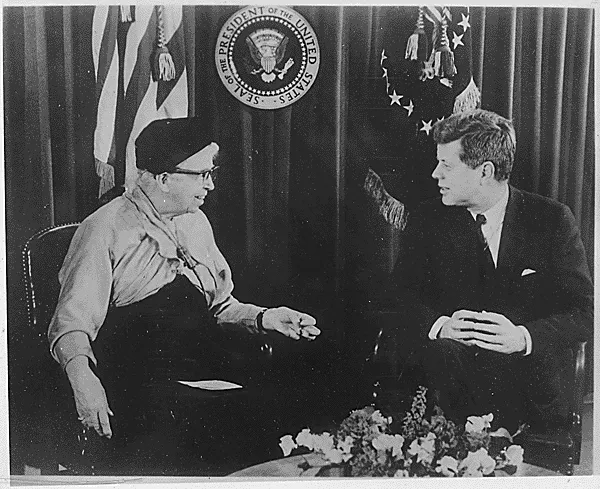
I was also struck by how well she understood the power of the press and was able to use it accordingly. Why do you think she had such a strong handle on it?
She considers herself a journalist. She joins the Journalist Union sometime in the mid ’30s. That's her profession. She takes it extremely seriously, and is very admiring of the career women journalists of the 30s, the news gals. She's very admiring and enjoys becoming one of them so to speak.
She was very friendly with at least four of the prominent reporters like [Associated Press reporter] Bess Furman, who attended her news conferences. There's her big friendship with Lorena Hickok who was a very important [AP] journalist at the time. They met during the 1932 campaign. Eleanor admired her position at the AP. Hickok admired Eleanor for being Eleanor. That friendship was extremely interesting when it was at its peak in '33 to '35. Hickok gave Eleanor also some fantastic ideas--the idea for the press conference, and the idea for the “My Day column”--big ideas.
/https://tf-cmsv2-smithsonianmag-media.s3.amazonaws.com/filer/a3/5a/a35ac934-f378-497c-b41f-316cf29c5cac/09-2320a.gif)
Speaking of that, you write that Eleanor’s weekly White House press conference “saved the jobs of women's journalists." Was that because of the Great Depression or was something else at play?
Journalists like everyone else lost jobs during the Great Depression, and so who would be the first to go? Well people who had recently joined the profession and weren't absolutely vital to the next day’s front page. So women journalists were fearful for their jobs and, one assumes, were able to retain their jobs because of Eleanor, because she provided this news source, which nobody did after her. I mean First Ladies do this, that, and the other thing, but these press conferences are the work of a professional.
There's a perception today that the First Lady’s role is to stay out of the political sphere. How does Eleanor Roosevelt contradict this narrative?
She really got involved with so many aspects of government during the 1930s with the administration of programs for unemployed workers, and she's out there campaigning for an anti-lynching bill as best she can.
It must have been terribly shocking to her political opponents. I can understand almost, not really, but almost, why Republican women in the election of 1940 wore these buttons that said, "We don't want Eleanor either." There was hostility to everything she did, everything that I persist at looking at as really her tremendous achievements. Her efforts to change everything in the White House did not go by without criticism, but they were monumental.
What do you think is something that we can all learn from Eleanor Roosevelt in 2017?
At the end of her life, she writes how the individual must change with the times.
“Readjustment is a kind of private revolution. Each time you learn something new you must readjust the whole framework of your knowledge. It seems to me that one is forced to make inner and outer readjustments all one’s life. The process never ends”
[Eleanor Roosevelt writes that in her 1960 book You Learn by Living.] I think that her last advice really has to do with the consciousness of the individual, and the desirability of the ability to adapt to change, to respond positively to a changing society. It’s one of my final selections that I picked out for this book-- a demand for flexibility in the reader, to move forward with changes in society and not resist.
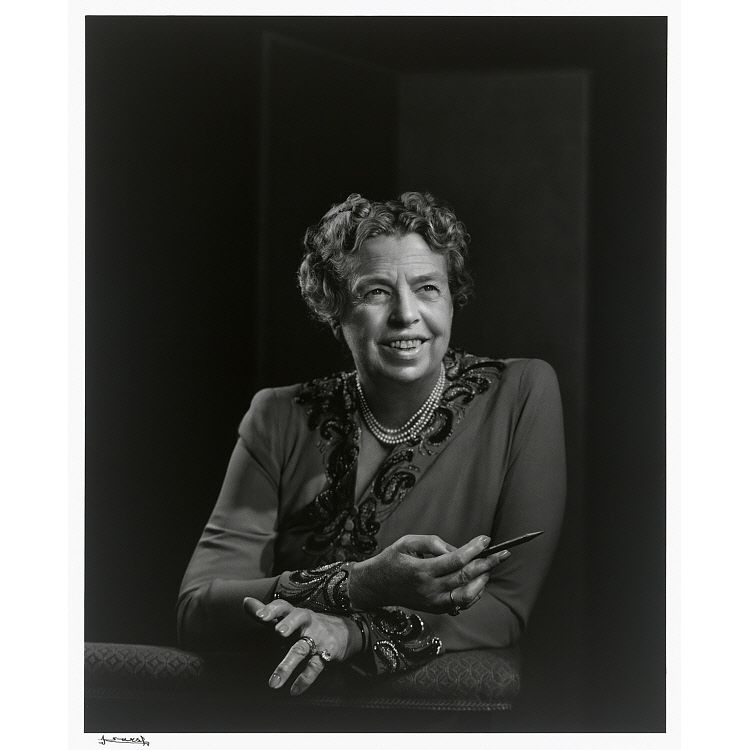
A Note to our Readers
Smithsonian magazine participates in affiliate link advertising programs. If you purchase an item through these links, we receive a commission.
